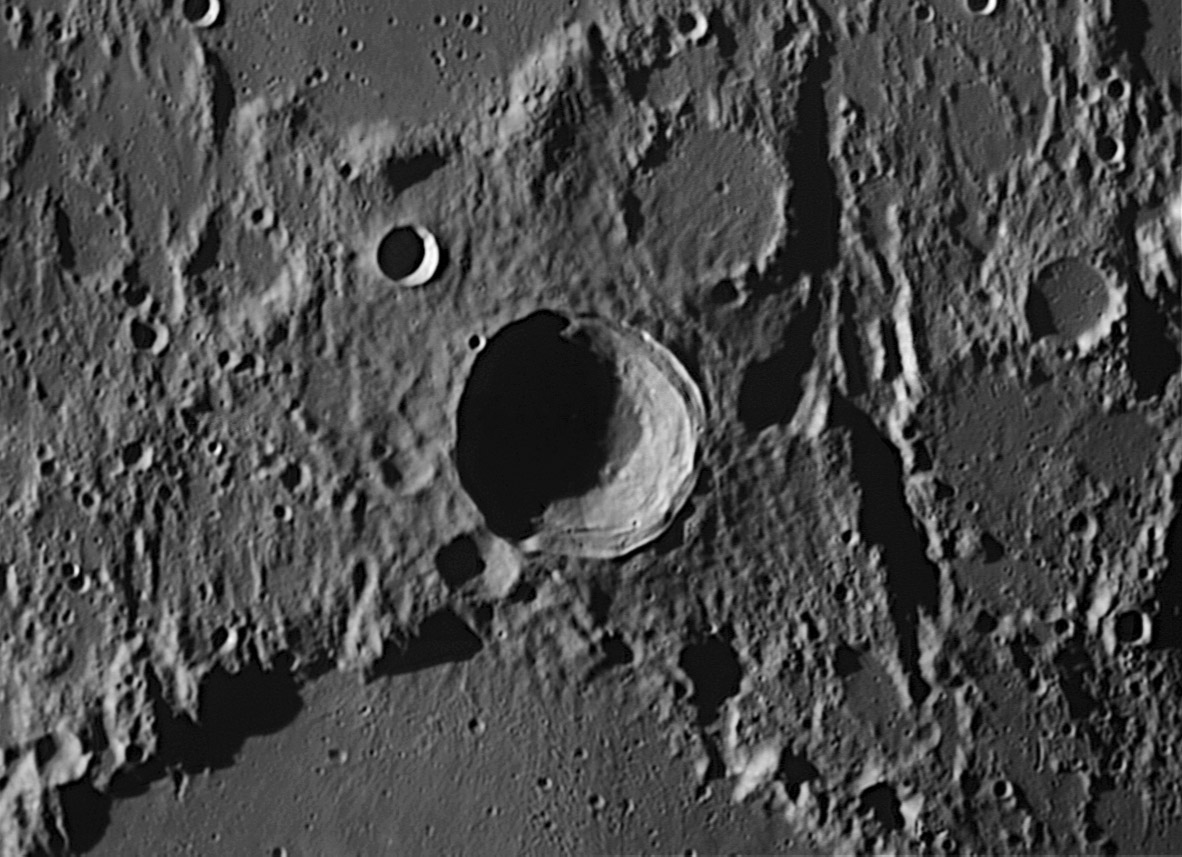July 2, 2012
Sculpture, Delicate And Coarse

image by Stefan Buda, Australia
Herschel, William, not Caroline nor John, is a relatively fresh looking crater whose continuous ejecta is seen as ridges across the northern floor of Ptolemaeus. Despite these youthful features it doesn't show rays on the Clementine high Sun mosaic and thus is more than a billion or maybe two years old. It and Herschel C, a 10 km diameter shadowed crater at the 11 o'clock position, are the only conspicuously fresh features here, and thus that formed since the deluge of Imbrium ejecta raked the landscape 3.85 b.y. ago. Raked is a good word, for virtually all of the surface of rim segments and ridges are short linears that point back accusingly to Imbrium. As mentioned recently, these are the pieces of the surface that remained after topography perpendicular to the path of a mega-hurricane like blast of debris was eroded away. Most of the surface was sculpted at a small scale, but the elongated shadowed trough, the informal Gyldén Valley of overlapping craters, is a larger momento of the basin-forming impact. The smooth material that covers the floor of Ptolemaeus must have been emplaced after the sculpting debris rushed by for its surface isn't gouged by it. Most researchers believe that this is also Imbrium ejecta, a more fluid phase, that came later. It is remarkable that a kilometer or so of this smooth stuff accumulated on the floor of Ptolemaeus (and a lesser thickness in Alphonsus) but didn't cover the more delicate sculpted terrains.
Chuck Wood
Technical Details
Jan 15, 2012. 16" Four panel mosaic with Dall-Kirkham telescope at f/24 + DMK21AU04 camera + red filter. Processed with Registax6 and Iris.
Related Links
Rükl plate 44
Yesterday's LPOD: Another Half Crater
Tomorrow's LPOD: Greek Moon
COMMENTS?
Register, Log in, and join in the comments.



